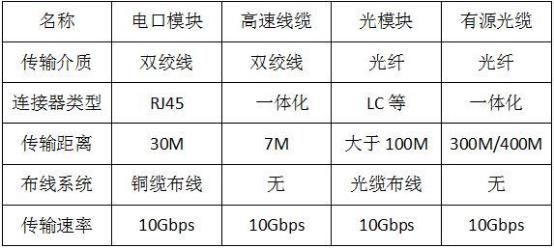Electrical Port Module and Optical Port Module Differences
Many people are not very clear about electrical port modules, or they are often confused with optical modules, and they cannot choose electrical port modules correctly to meet the mutual benefit of transmission distance requirements and cost optimization. So, In this article we’re going to discuss about The difference between electrical port module and optical module.
Both electrical and optical modules can be used in switches and OLTs to achieve photoelectric conversion. Before talking about the difference between electrical and optical modules, let’s take a look at electrical and optical ports. The electrical port is what we often call the network port (RJ45), which is used to connect the network cable and the coaxial transmission cable to transmit electrical signals; the optical port is the optical fiber socket, which is used to connect the optical cable. The optical port on the switch generally uses an optical module to transmit light Signal.
The difference between the electrical module and the optical module is mainly in the interface, collocation, parameters, components, and transmission distance.
The interface is different: the interface of the electrical module is RJ45, and the interface of the optical module is LC, SC, MTP/MPO, etc.The matching is different: the electrical module is used with the network cable, and the optical module is connected with the optical fiber jumper.
The parameters are different: the parameters of the electrical module have no wavelength, while the wavelengths of the optical module are 850nm, 1310nm, and 1550nm.
Different components: The electrical module does not have the core component of the optical module – the laser.
The transmission distance is different: the electrical interface module has a maximum distance of 100 meters, while the optical module has a maximum transmission distance of 160 kilometres.
Compared with traditional optical modules, DACs and AOC interconnect, what are the advantages and disadvantages of electrical modules? Take 10G Ethernet interconnection as an example: electrical port module VS high-speed cable VS optical module VS active optical cable
1. The link distance between devices in most data centers is between 10m and 100m, and the transmission distance of high-speed cables does not exceed 7 meters. The use of electrical port modules can make up for the lack of transmission distance.
2. The electrical port module can directly implement 10G transmission in the existing copper cable wiring system, reducing deployment costs, while the optical module uses optical cables for wiring, which requires additional equipment such as Ethernet switches or photoelectric converters.
Overall, the 10G electrical port module is a cost-effective 10G connectivity solution. Of course, the electrical port module also has its shortcomings. In the deployment of large data centers, the electrical port module consumes too much power, the cost is too high, and it does not have the DDM digital diagnosis function. By comparing the advantages and disadvantages of the electrical port module, we can know more clearly what scenarios it can be used in and how to reduce the cost of networking.
The above is the knowledge explanation of “electrical port module and optical port module” brought by Shenzhen Haidiwei Optoelectronics Technology Co., Ltd. henzhen HDV photoelectric Technology Co., Ltd. The module products produced by the company cover optical fiber modules, Ethernet modules, optical fiber transceiver modules, optical fiber access modules, SSFP optical modules, and SFP optical fibers, etc. The above module products can provide support for different network scenarios. A professional and strong R&D team can help customers with technical issues, and a thoughtful and professional business team can help customers get high-quality services during pre-consultation and post-production work. Welcome you to contact us for any kind of inquiry.

